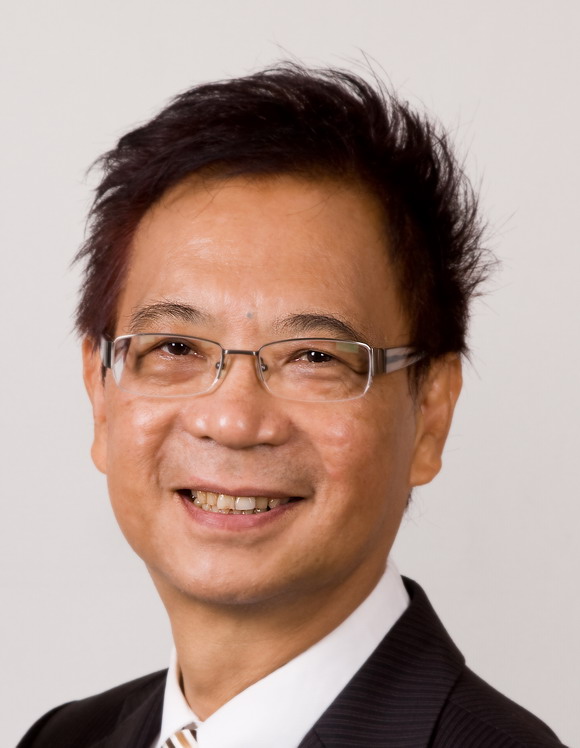 |
VIII
CONGRESO INTERNACIONAL y XIII
GRANADA
(ESPAÑA), 19-22 de
NOVIEMBRE, 2015
|
 |
Wong Chee Wing President of The Chinese Association of Cognitive Behaviour Therapy (CACBT) The Chinese University of Hong Kong HONG KONG |
|
Dr. Wong es profesor adjunto
asociado tanto del departamento de
Psiquiatría como del de Psicología
en la Universidad China de Hong Kong, profesor
asociado honorario del departamento de
Psicología de la Universidad de Hong
Kong, y profesor visitante de la Universidad
Médica Gannan en China. El Dr. Wong
realizó su formación
clínica en el Instituo de
Psiquiatría y el Hospital Maudsley de
Londres bajo la tutela de Hans Eysenck y Jack
Rachman. Ha trabajado extensamente en Reino
Unido, Australia, Hong Kong y China. El Dr. Wong
ha contribuido a muchos artículos
revisados por pares, capítulos de libros,
artículos y monográficos. Es
coautor del manual de psiquiatría
“Psychological Medicine 2nd Edition” publicado
en 2008, y preferido en la psiquiatría en
China por los estudiantes médicos y los
psiquiatras en formación. Sus intereses
clínicos son los trastornos del estado de
ánimo, el TOC, la neuropsicología
y la psicología forense. El Dr. Wong es
el presidente de la Asociación China de
Terapia Cognitiva Conductual (Chinese
Association of Cognitive Behaviour Therapy,
CACBT) (www.cacbt.org). Fue presidente del
VII Congreso Internacional de Psicoterapia
Cognitiva celebrado en Hong Kong en junio de
2014 (www.iccp2014.com).
RESUMEN CONFERENCIA Similitudes entre la ansiedad y la depresión desde una perspectiva estructural El análisis de una amplia muestra comunitaria en Hong Kong mediante medidas de ansiedad y depresión produjo un factor común de orden superior que va más allá de los trastornos emocionales. Estos hallazgos son acordes al Modelo Tripartito de Watson y Clark y al Modelo de los Tres Factores de Barlow. Las implicaciones de este hallazgo sugieren una incompatibilidad entre las estructuras de los trastornos emocionales y los tratamientos psicológicos que estamos utilizando para tratarlos. La TCC, por ejemplo, se dirige, por un lado, a la aprensión anticipatoria y a la hiperactividad simpática, y, por otro, a la cognición negativa de desesperanza y pérdida. El factor de orden superior de la afectividad negativa fue raramente el objetivo de la terapia. Esto puede indicar las muchas debilidades del sistema de diagnóstico existente, y la necesidad de modernizar nuestras filosofías de clasificación en el futuro. |
|
|
Dr. Wong holds joint appointments
as Adjunct Associate Professor to the
Departments of Psychiatry and Psychology at The
Chinese University of Hong Kong, Honorary
Associate Professor to the Department of
Psychology of The Hong Kong University, and
Visiting Professor to the Gannan Medical
University in China. Dr. Wong received his
clinical psychology training from the Institute
of Psychiatry and the Maudsley Hospital in
London under the mentorship of Hans Eysenck and
Jack Rachman. He has worked extensively in
the UK, Australia, Hong Kong and China.
Dr. Wong has contributed many peer-reviewed
papers, book chapters, articles and
monographs. He co-edited a Chinese
psychiatry textbook “Psychological Medicine 2nd
Edition” published in 2008, and is a preferred
textbook in psychiatry for medical students and
trainee psychiatrists in China. His
clinical interests are mood disorders, OCD,
neuropsychology and forensic psychology.
Dr. Wong is Chairman of the Chinese Association
of Cognitive Behaviour Therapy (CACBT)
(www.cacbt.org). He was ex-President of
the 7th International Congress of Cognitive
Psychotherapy held in Hong Kong in June 2014
(www.iccp2014.com).
CONFERENCE ABSTRACT The Commonalities between Anxiety and Depression from a Structural Perspective Examination of a large community sample in Hong Kong using measures of anxiety and depression yielded a higher order common factor which transcends across emotional disorders. The findings were in line with Watson & Clark’s Tripartite Model and Barlow’s Three Factor Model. Implications for this finding suggest a mismatch between the structures of emotional disorders and the psychological treatments that we deploy to treat them. CBT, for example, targets at anticipatory apprehension and sympathetic hyperactivity on the one hand, and the negative cognition of despair and loss on the other. The higher order factor of negative affectivity was rarely the target of therapy. This may point to the many weaknesses of the existing diagnostic system, and the need to revamp our philosophies of classification in the future. |
|